Redmine remains a popular open-source system, but in 2025, more and more teams prefer modern, visual solutions. Its outdated interface, manual plugin setup, and lack of built-in Kanban boards or Gantt charts often push users toward alternatives that launch faster, require less technical maintenance, and provide visual clarity from day one. Below is an overview of ten tools that can effectively replace Redmine — and why Worksection often emerges as the best choice.
Why Are Users Looking for Redmine Alternatives?
Redmine’s first versions appeared nearly fifteen years ago, and since then the project management landscape has evolved dramatically. Modern managers want to see tasks on a Kanban board, drag cards with a mouse, generate reports with a few clicks, and integrate a time tracker without compiling plugins by hand.
Redmine is indeed flexible, but:
- its interface feels like the early 2000s and is difficult for non-technical users;
- most extensions are maintained by volunteers, so compatibility after updates can’t be guaranteed;
- there are still no built-in visual tools for agile teams;
- server administration takes time, and any migration requires deep Linux and Ruby knowledge.
What to Consider When Choosing a Redmine Alternative
Before migrating, consider several key aspects:
- Interface usability: Can marketing and design teams use the tool without weeks of training?
- Ready-made visual tools: Kanban, Gantt charts, calendars.
- Automation: deadline reminders, recurring tasks, webhooks.
- Flexible roles and permissions, especially if clients are involved.
- Built-in time tracking and analytics: how many hours were spent, and where are the bottlenecks?
- Pricing and licensing model: essential features shouldn’t be hidden behind expensive add-ons.
The Best Redmine Alternatives in 2025
Worksection
Worksection stands out by offering all features on every pricing plan. You get Kanban boards, Gantt charts, calendars, checklists, and a built-in time tracker right after signup. Setup takes less than a day thanks to its cloud-based nature, and the intuitive interface is accessible even for non-technical users.
Each task holds comments, files, deadlines, and time logs — so nothing is lost. For working with clients, you can customize access rights and hide internal communication. Unlike Redmine, Worksection doesn’t charge for plugins — statistics, reports, and exports to PDF or Excel are all included. As a result, the platform stays simple while still meeting the needs of small creative agencies and large product teams alike.
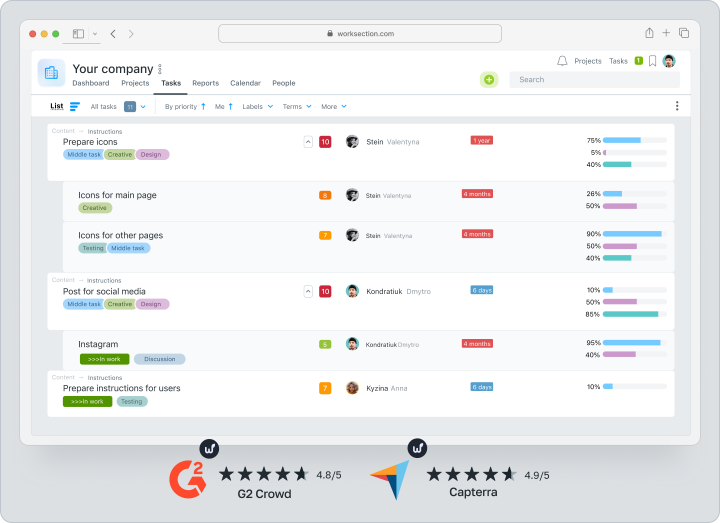
ClickUp
ClickUp positions itself as the “one platform to replace them all.” Users can switch between list view, Kanban, Gantt, and even mind maps. A key strength is customization: statuses, fields, and automations can be built without code. There’s a built-in docs editor, chat, and goal tracking.
However, due to the wide range of features, the learning curve is steeper than Worksection. The free plan is generous, but advanced reporting requires upgrading. Still, ClickUp is a powerful alternative for those ready to invest time in setup.

Jira
Jira is still considered the gold standard for software development. Key strengths include scalability, flexible workflows, and a rich plugin ecosystem. It supports Scrum boards, roadmaps, and burndown reports.
That said, small project teams might find Jira overwhelming — setup requires admin expertise, and pricing increases with team size. If your focus is development with deep CI/CD integration, Jira is a strong option. For marketing or cross-functional teams, Worksection or Monday.com are simpler choices.
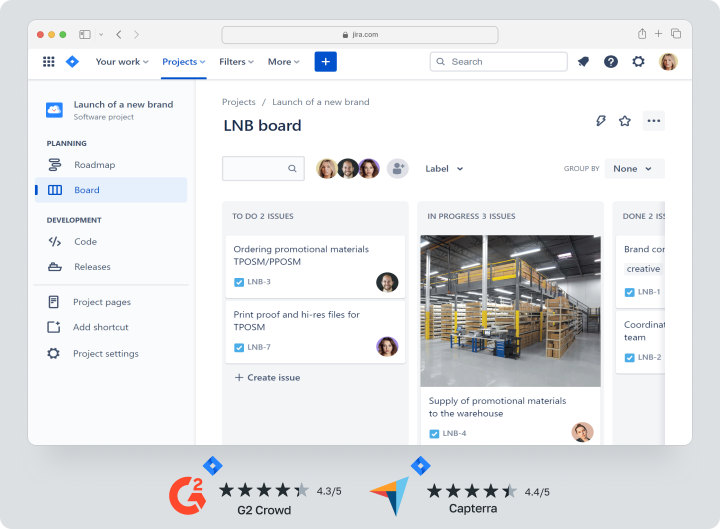
Asana
Asana is known for its clean interface and intuitive checklists. It’s great for campaigns with clear deadlines and dependencies; the timeline view resembles a Gantt chart. It’s a great fit for marketing teams and design studios.
However, unlike Redmine or Worksection, Asana lacks a built-in time tracker — external tools are required. Advanced features (like Portfolios and Goals) are available only on business plans.
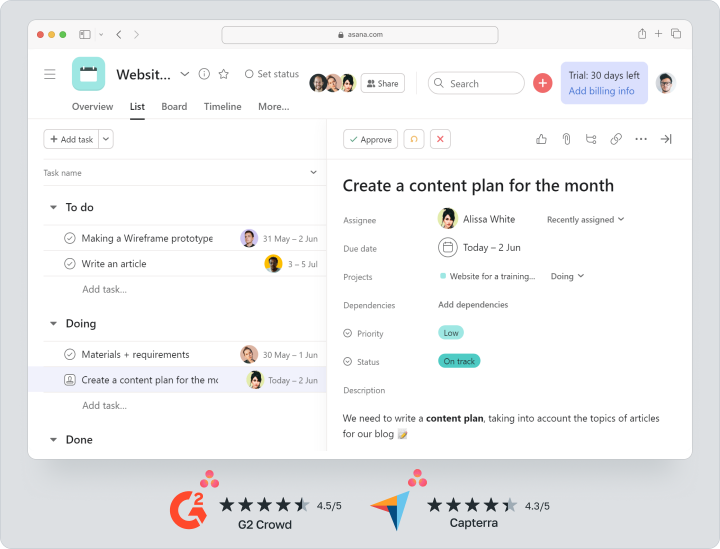
Wrike
Wrike focuses on large, distributed teams. It features robust reporting tools and a built-in proofing system for visual content. Agile modules are available, but cost extra. The learning curve is above average — it takes time to understand “spaces” and “folders.”
On the plus side, Wrike emphasizes security — ideal for the corporate sector. If you’re on a tight budget, Worksection offers similar value at a lower price.
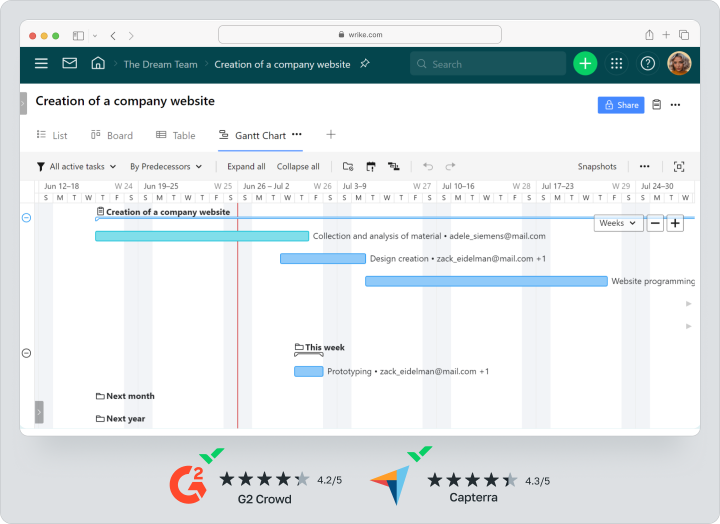
Monday.com
Monday.com offers a bright, visually rich interface. Fields can be customized like building blocks — numbers, dates, statuses. In just minutes, you can set up a Kanban board or a marketing calendar.
However, it lacks advanced issue-tracking features for developers. Time tracking is available only on higher-tier plans, and the Gantt chart is implemented as a widget. It’s ideal for teams focused on visual planning with minimal technical overhead.
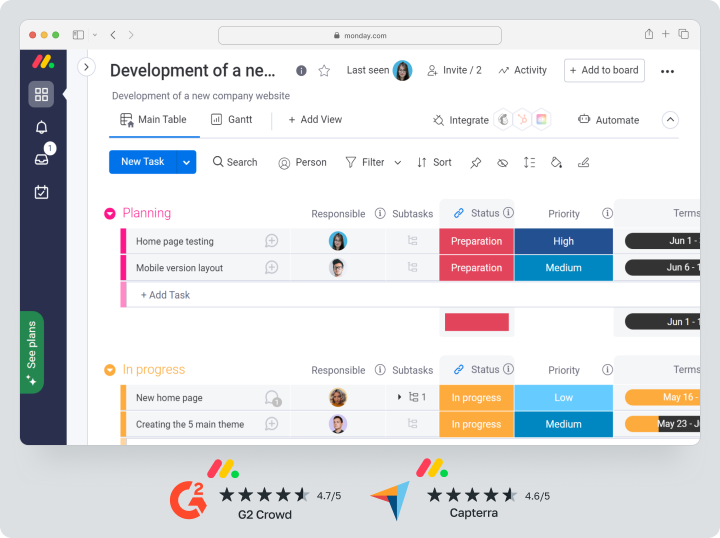
OpenProject
OpenProject is an open-source alternative built on the same tech stack as Redmine but with a modern interface. It offers Agile boards, roadmaps, and Gantt charts out of the box. You can deploy it on-premise and integrate with LDAP.
For companies committed to the open-source ecosystem, OpenProject is a logical upgrade. The downside: you still need to manage the server and handle updates.

Taiga
Taiga is another lightweight open-source tool. It was built with Scrum and Kanban in mind, so backlog management is smooth. The minimalist interface speeds up onboarding, and the built-in wiki helps store specs.
However, time tracking and reporting are limited — you’ll need integrations. If you want simplicity and Agile support, Taiga is great. But for mixed teams, Worksection may offer better value.
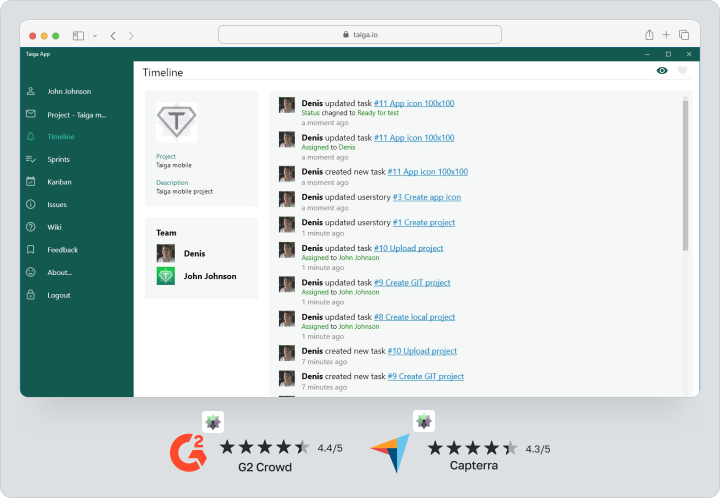
Basecamp
Basecamp prioritizes communication over classic task management. Each project includes chats, message boards, to-dos, and docs. The tool keeps everyone notified about deadlines — but there’s no Gantt chart or custom fields.
The pricing model is simple: a flat rate for the entire account. Basecamp is ideal for small creative studios that need organized communication and file sharing, rather than complex workflows.
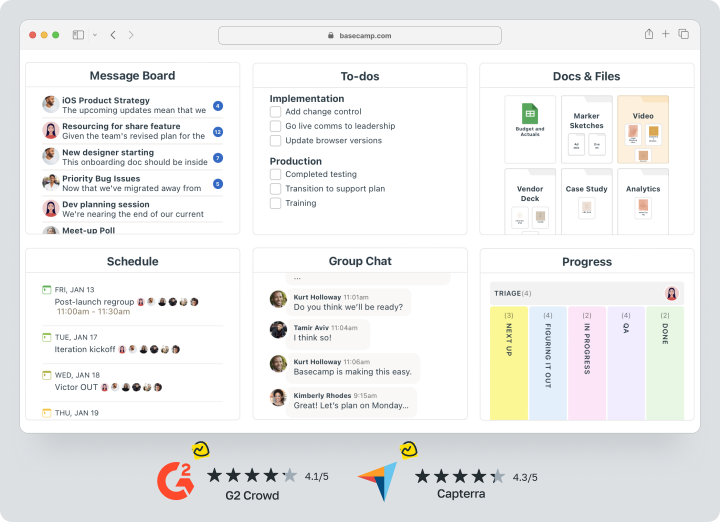
Notion
Notion is a hybrid of a knowledge base and task manager. Users create boards, tables, and pages tailored to their needs. This offers endless flexibility but requires time to structure everything properly.
Built-in templates help get started, but there’s no native Gantt chart, and time tracking must be added via integrations. Notion is better suited for documentation and personal productivity than team Scrum workflows.
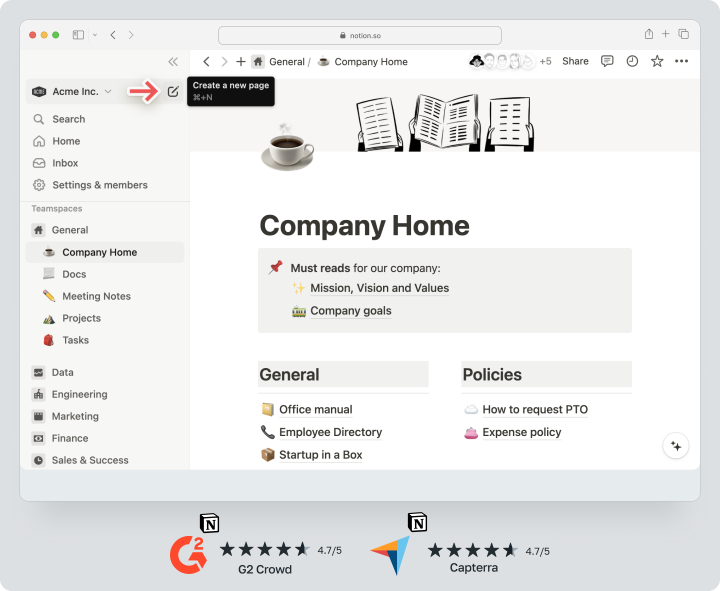
Comparison Table: Top Redmine Alternatives
| Platform | Kanban / Scrum | Gantt Chart | Time Tracker | Cloud / On-Prem | Pricing Highlights |
|---|---|---|---|---|---|
| Worksection | Yes | Yes | Built-in | Cloud | All features on every plan |
| ClickUp | Yes | Yes | Limited in Free | Cloud | Pro plan needed for advanced reporting |
| Jira | Yes | Via Roadmap | Plugins | Cloud / On-Prem | Price grows with team size |
| Asana | Yes | Yes | Integration | Cloud | Advanced features in Business plan |
| Wrike | Yes | Yes | Built-in | Cloud / On-Prem | Agile modules cost extra |
| Monday | Yes | Widget | Higher plans | Cloud | Price depends on number of users |
| OpenProject | Yes | Yes | Plugins | On-Prem | Open source with paid support |
| Taiga | Yes | No | Limited | Cloud / On-Prem | Free for up to 3 users |
| Basecamp | No | No | No | Cloud | Flat monthly rate |
| Notion | Kanban block | No | No | Cloud | Free for personal use |
Which Platform Should You Choose in 2025?
If your team values simplicity, fast onboarding, and full functionality without hidden fees, Worksection is the obvious choice. It combines Kanban boards, Gantt charts, calendars, and time tracking under one subscription — no need for plugins or server management. ClickUp is best for teams ready to set up complex automations. Jira remains the leader for large dev teams. Monday.com is great for visual thinkers who want flexible boards.
But when you need a balanced solution with a great price, user-friendliness, and quick deployment — Worksection outshines most competitors.
Frequently Asked Questions (FAQ)
Which Redmine alternative is best for small teams?
For smaller teams without a dedicated admin, it’s important to get started within a day and avoid server setup. Worksection is the simplest: register, invite teammates, and start working with Kanban or Gantt views immediately. The free trial lets you explore all features with no restrictions.
Are there free Redmine alternatives with a modern interface?
Among fully free options, Taiga stands out: open-source, Scrum support, and a minimalist UI. But you’ll need to provide hosting or use the limited cloud version. OpenProject is also free in its Community edition but requires server knowledge.
If you prefer cloud simplicity with no infrastructure concerns, try the free trials of Worksection or ClickUp Free.
How is Worksection different from Redmine?
The main difference is the cloud architecture: Worksection requires no local installation or technical maintenance. Its modern interface is user-friendly, and all core features — Kanban, Gantt, calendar, time tracking — are active from day one.
Redmine requires manual setup, plugin updates, and extensive configuration.
Worksection also supports custom client access, which is great for agencies and outsourcing studios.
Conclusion
Redmine remains powerful — but outdated. If you value open-source flexibility and don’t mind server administration, OpenProject or Taiga are natural evolutions. But for most companies in 2025, what matters most is quick deployment, visual boards, and built-in time tracking.
That’s why Worksection, offering all essential features in every plan and requiring no technical upkeep, is one of the best Redmine alternatives today.